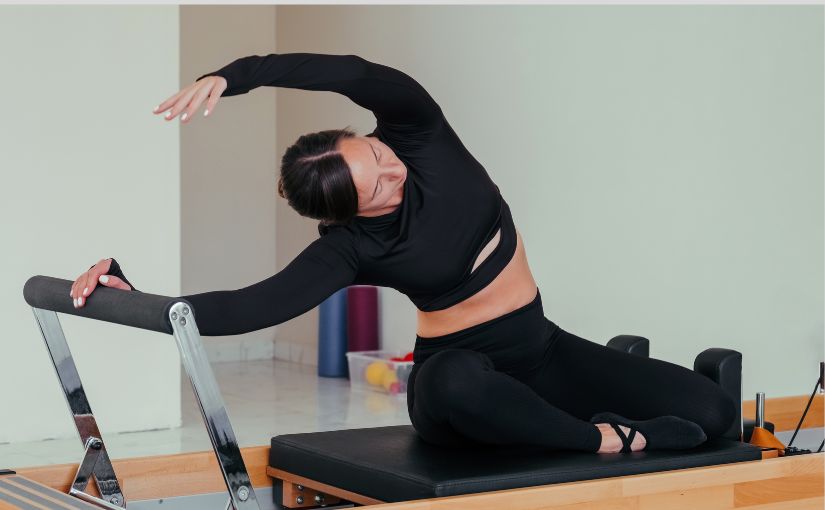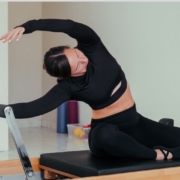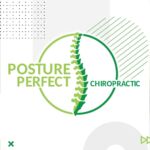Chiropractic Therapy for Pilates Practitioners

Pilates is more than just a series of stretches or core-focused movements—it is a dynamic, full-body workout that improves strength, balance, and flexibility. Its holistic approach to fitness has made it a favorite among athletes, dancers, and health enthusiasts. Despite its reputation as a low-impact exercise, Pilates can be physically demanding. Repetitive movements and prolonged muscle engagement often lead to common issues like muscle strains, ligament injuries, and delayed onset muscle soreness (DOMS).
Chiropractic therapy offers essential support for Pilates practitioners by addressing spinal alignment, improving neuromuscular function, and correcting imbalances within the body. This therapeutic approach not only helps prevent injuries but also enhances recovery and long-term resilience. Through chiropractic therapy, practitioners can experience greater movement efficiency, faster recovery, and improved performance.
This write-up highlights the benefits of chiropractic care for Pilates practitioners, important safety considerations, and how it can enhance performance while reducing the risk of injuries.
Understanding the Physical Demands of Pilates
Every Pilates movement, whether dynamic or static, relies on precise control to maintain alignment and balance. Exercises like leg stretches, roll-ups, and planks require coordinated muscle effort, demanding both stability and smooth motion.
Pilates can put stress on the body, especially when movements are repeated too often or done with poor form. The spine is particularly at risk, with exercises involving bending, stretching, or twisting often leading to lower back pain or neck tension if the core isn’t properly engaged. The hips and knees can also take a hit during weight-bearing poses and leg-focused exercises.
Common problem areas include the lower back, which can be strained without enough core support, and the neck, which is easily overworked when lifting the head or upper body. The hips can feel the strain too, as they play a key role in stabilizing the body. Overtraining or pushing too hard without proper form increases the risk of injuries like muscle imbalances and ligament strain.
Understanding the physical demands of Pilates helps practitioners find the right balance between effort and safety. Therefore, allowing them to enjoy long-term benefits without placing unnecessary stress on their bodies.
Common Pilates Injuries
Lower Back Pain
Lower back pain is a common complaint among Pilates practitioners. It is usually caused by poor core engagement or placing too much strain on the lower spine. Exercises like roll-ups or leg raises can easily stress this area if the core isn’t doing its job or if the lower back is overworked.
How chiropractic care can help: A doctor of chiropractic can help by realigning the spine and relieving pressure on the muscles and joints in the lower back. With proper adjustments, they can reduce pain and improve mobility. Over time, chiropractic care, combined with treatments like a chiropractic massage, helps strengthen the area and lowers the risk of future problems.
Neck Pain
Neck pain happens when the neck does more work than it should during exercises like the hundreds or roll-ups. Instead of the core carrying the load, the neck muscles take over, leading to strain and tension. This tension often spreads to the shoulders or upper back.
How chiropractic care can help: A doctor of chiropractic can ease neck pain by realigning the cervical spine and releasing muscle tension. Chiropractic massages may also help loosen tight muscles, making it easier for practitioners to maintain good form and prevent future neck strain.
Hip Pain
Hip pain often comes from repetitive leg movements or improper form during exercises like leg circles or bridge poses. The overuse of hip flexors and stabilizing muscles can lead to discomfort and tightness in the hips and pelvis.
How chiropractic care can help: Chiropractic adjustments correct misalignments in the lumbar and pelvis, which are common contributors to hip pain. A chiropractic massage can release tight muscles and restore flexibility. By addressing these issues, the stress on the hips is reduced, allowing for smoother, pain-free movement.
Chiropractic care, guided by an experienced doctor of chiropractic, is a powerful way for Pilates practitioners to manage injuries, improve mobility, and maintain a pain-free practice that supports long-term growth and performance.
How Chiropractic Therapy Supports Pilates Practice
Chiropractic therapy focuses on spinal alignment, which is crucial for overall health and performance. The spine not only supports posture but also affects muscle function, joint movement, and body mechanics. When properly aligned, it enables smoother movement and better physical function.
Better Joint Mechanics
Proper alignment allows joints to move freely without restriction. Misalignments can lead to uneven joint pressure and movement issues. Chiropractic adjustments restore balance, improving posture and allowing Pilates practitioners to move with precision and control.
Improved Flexibility and Mobility
Misalignments often cause stiffness in surrounding muscles and joints, limiting movement. Chiropractic adjustments help release restrictions, allowing muscles and joints to stretch fully. This leads to easier, more effective movement during Pilates.
Reduced Muscle Tension and Pain
A misaligned spine can lead to tightness and discomfort in the back, neck, and hips. Chiropractic care relieves pressure on nerves and muscles, reducing pain and promoting smoother, pain-free motion.
Less Fatigue
Spinal misalignments can strain the body and cause fatigue. Correcting alignment restores efficient body mechanics, helping practitioners sustain longer sessions without feeling drained.
Enhanced Hip Mobility and Stability
The hips and pelvis are key to balance and movement control. Misalignments in these areas can limit mobility and cause instability. Chiropractic adjustments realign the pelvis, improving flexibility and core stability for better performance and injury prevention.
With proper spinal alignment, Pilates practitioners can improve movement, reduce pain, and sustain long-term performance.
Final Thoughts
Chiropractic care can significantly enhance a Pilates practice by addressing issues like muscle tension, joint stress, and limited mobility. It promotes better spinal alignment, which not only eases pain and accelerates recovery but also improves overall movement quality and performance. When combined with proper exercise techniques and adequate rest, chiropractic therapy supports long-term health and fitness. For added benefits, combining spinal adjustments with a chiropractic massage can further release muscle tension and improve flexibility, enhancing overall performance.
At Posture Perfect Chiropractic, your safety and well-being are our highest priorities. Our team of chiropractors is highly trained to deliver precise, safe, and effective spinal adjustments tailored to your unique needs. Our dedicated care is designed to support your Pilates journey, helping you move freely, perform at your best, and achieve lasting wellness.
Frequently Asked Questions
Absolutely! Chiropractic care and Pilates work hand in hand to promote optimal health. Chiropractic adjustments correct structural misalignments, while Pilates strengthens the muscles needed to maintain proper alignment. Together, they offer a powerful combination, especially for those dealing with back pain, neck pain, or other musculoskeletal concerns.
Chiropractic care helps optimize spinal alignment and neuromuscular function. This improvement enhances core engagement, promotes more efficient movement patterns, and reduces the risk of injuries during Pilates.





